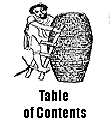
|
 To: Gebru From: Alula Subj: Gragn - "Man of the Year?" First thank you for letting me air my opinion based on my perspective of the historical facts. What is written below is my personal opinion regarding Gragn and what he did to Ethiopia. I am basing my opinion below on the first hand chronicles of the Portuguese which was eventually translated into English in the 1920's. The title of the book is "The Romance of the Portuguese in Abyssinia." I cannot remember all the bibliographical information at this point but I can make efforts to find it and relay the information, if desired. It is my understanding that the idea of recognizing a man by the name of Ahmed Gragn as Ethiopia's "Man of the Year" was been proposed. First of all, when we discuss Gragn, we need to put matters into perspective. Yes, Gragn was a native of Harrer, and a Somali by birth, no one can contest that. However, what has become apparently confused is to whom Harrer belonged in the 15th and 16th Centuries?? It certainly was not Ethiopia. Ethiopia was ruled from Denkaz, the capital city at the time. Today, Denkaz is nothing more than ruins, but in it's heyday, it was a city located east of Lake Tana in Begemdir. As we all know, the Ethiopian Empire is ancient and as such has seen many trials and tribulations in its time. Its borders have expanded, as far as Egypt at times, and then contracted to just within its mountainous strongholds. During the 15th Century, there existed a Sultanate called Adal in the area we now know as Harrer. This Sultanate had robust commercial and political relations with the Ottoman empire, which controlled present day Yemen. Ethiopia and Adal were at constant war with each other, each side carrying out raids and campaigns into the other's territory. The wars were between two equals, so neither Ethiopia nor Adal had the capability to vanquish the other. The Ottoman Turks, themselves actively engaged in wars against European kingdoms, did not pay much attention to Ethiopia. Things changed when the Portuguese paid a visit to the court of Emperor Lebne Dengel, in 1492 - yes, the very same year Columbus "discovered" America. However, the Emperor did not see much advantage in befriending the Portuguese or how he could form an alliance that would have benefited Ethiopia. The motive of the Portuguese was to 1) spread Catholicism and 2) form an alliance with this mysterious and powerful Christian empire, which they hoped would eventually enable them to fight the Turks. The visit of the Portuguese did not go unnoticed by the Turks, who were promptly informed by their spies in Denkaz. To make a long story short, the Turks, who were in contact with Adal, found Gragn to be a formidable military person with a fanatic zeal for Islam. They made a deal with Gragn: he was to subjugate the Christian empire and convert it to Islam while they would thwart any possible alliance between Ethiopia and Europe, which would have dangerously out-flanked the Turks. Thus the campaign of Gragn against Ethiopia began, with the first battle fought on the fields of Shembera Kurey, not far from present day Addis Ababa. The Turks provided the Adal and Gragn 900 Bombardiers, or what would be considered in today's military terminology, artillery men. The war was, needless to say, a disaster to Ethiopia. Ethiopians were armed with only swords and spears while their enemies had guns and experienced Turkish troops under their command. The story is very involved and long and I cannot possibly recount the entire tragedy in one email. But I would like to make a few points clear: 1) Adal was a Turkish satellite state; 2) Gragn was not Ethiopian, he was Adal of Somali origin; and 3) The Portuguese were both a blessing in disguise and the devil amongst us.
The main thrust of my argument here is that if Adal were indeed not a Turkish satellite, there would have been no logical reason for them to have handed the looted treasures over to the Turks? The Oromos, a nomadic and pastoral people, who were at the time living in what is present day Kenya and Tanzania, were on the move looking for greener pastures for their cattle, which were the backbone of their economy. The Oromos, contrary to current popular belief, were not organized into a single unitary state, but were a fractured society of nomads organized into Gadas. Each Gada had a leader and operated according to the interests of the Gada and not as part of a bigger entity or an Oromo nation. Some of the Gadas moved Westward from present day Kenya, past Lake Victoria and ended up in what is now Rwanda and Burundi (they may have been the ancestors of the people currently known as the Tutsi, who have very close cultural ties to the Oromos that live in present day Kenya and Ethiopia). Those Gadas that moved north into Ethiopia did so in staggered waves. According to the Portuguese, the Oromos first set foot in Ethiopia in the year 1522. But their advances were checked by the Ethiopians. Only after 10 years of destructive wars between Adal and Ethiopia, which weakened both nations, were the Oromos able to move deeper into Ethiopia and Adal unopposed. Some may not know this, but the reason that the Adals built the wall of Harrer, which still stands today, was to defend the capital from the advances of the Oromo. A very interesting point that I would like to make here is that, it was because of Gragn that the Oromos got what is now largely perceived as a derogatory name - Galla. From my understanding, when Gran realized that the Ethiopians were turning the tides of war against him, he needed allies quickly and approached the Oromo Gada that had settled closest to Adal, seeking a military alliance the complete details of which escape me. Upon the return of the messenger, Gragn asked him in Somali, "Gal-e?" meaning "What did they say?" The response of the messengers was, "Gal-a" meaning, "They said, 'No'." Now, I'm not saying that my assertion cannot be refuted or disproved, only that from what I have heard and read, that's where the word Galla came from.....the Somalis. This is all for now. Regards,Alula |

|

|

|

|

|
| © Copyright SELEDA Ethiopia, April 2001. All Rights Reserved. |